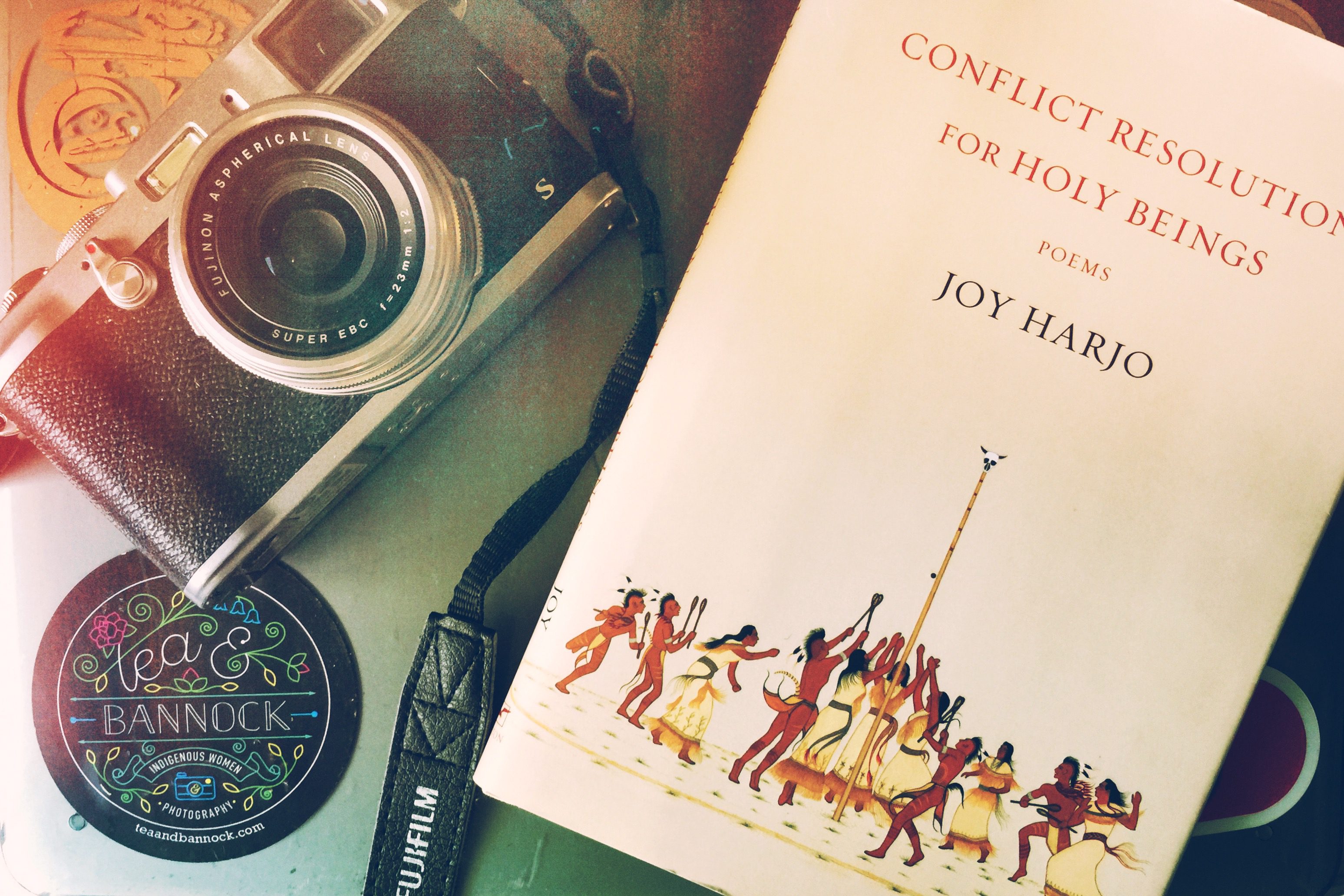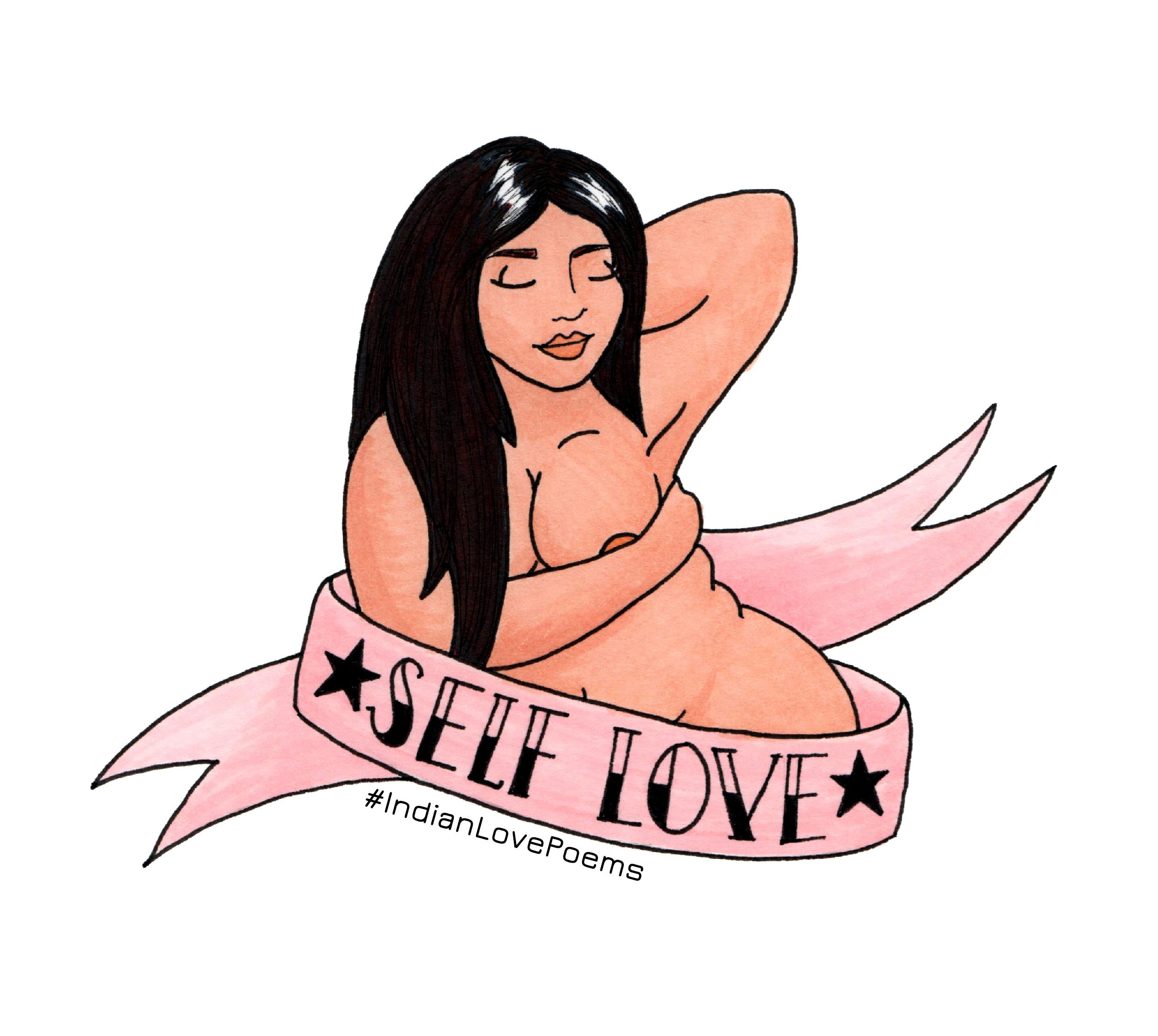
I have never read Joy Harjo’s poetry before, her being an American writer and my previous work being with Canadian Lit. I chose this collection as it encompassed a wide range of her previous writing, and would give me an overview of her style. In general, I found her later work to be more compelling with the stories she created – more of an experience.
Had-It-Up-To-Here Round Dance (for two voices) with Charlie Hill (p. 45)
I laughed way too much at this at the beginning, and settled into an uncomfortable thought process at the end. The song tells the two perspectives of a man and woman who are judging each other’s sweeties of the night, a love song where they just want to be together but there are mixed signals and mixed up pasts. The woman is singing about how she doesn’t like his girlfriend with her “high heeled shoes / [a]nd her skirt up there / [a]nd her blonde hair down to there”. The man is no better, saying “I don’t like your boyfriend and his white man ways. / You hold him in your shawl it makes me crazed” but both can’t speak to each other. The song carries through memories of how they used to come to the dance hall/bar, and now it seem like too many people there know her, and all they want is for one another to “come close to me I’ll tell you how much I love you / honey, how much I love you honey hi yah.”
They have a song-fight, where she says she never liked any of his women, listing a long, long line of Indigenous women he has mussed with, and how it looks “bad on me / How could you do this to me?”
But then as soon as they get close enough, he starts telling her same old, same old story that it didn’t mean anything, and “I woke up on the floor with her” and “You read things into it.” That dark twist at the end makes this love song uncomfortable. Taken lightly, it could be that same old, same old cheating man story. But when viewed with less-forgiving eyes, it’s a violation of the woman who is passed out, and the woman seems to have interrupted him in the middle of an assault.
Hence the uncomfortable ending. Am I reading too much into this ending? As MMIW are a true and frightening aspect to our Indigenous culture, as is sexual assault and abuse towards Indigenous women, this poem sits heavy.
You Can Change the Story, My Spirit Said to Me as I Sat Near the Sea (p. 101)
I adored this story. This is about a woman who is up North is Alaska, and she is in a “time when people dreamed and thought / together as one.” She mentions that this community has a “man who dressed up and lived as a woman and was known as the best seamstress.” She is there with a friend who is also a distant cousin, and the first night they arrive, a woman is murdered.
She knows they will be killed as the reason for the evil that entered the village, and she “thank[s] the body that has been my clothing on this journey. It has served me well for protection and enjoyment.” She approaches her death at the hands of the village calmly, despite her body’s protest.
Once she has been killed, she meets her soul’s helper, who tells her “You can go back and change the story.” She questions this and is shown a “a man in the village stalk a woman. She is not interested in him but he won’t let go.” She watches him, the village’s best walrus hunter, murder her, and she “can see his footprints in blood as he returns to the village alone.”
Finally, she is back in the village, after the murder. She stand up, “I have a story I want to tell you.” She sings and dances, speaking about the walrus hunter, the best walrus hunter in town. The “story has its own spirit that wants to live.” Then she tells the story of the killing of “a walrus who is like a woman” and the killer stands up and the people “turn together as one and see him.” They see he must be killed.
She returns to present time, and she sings and dances the story, still feeling the echo of it in her bones. She notes, “we make a jumble of stories. We do not dream together.”
I enjoyed this as I felt it was a reclaiming of victimhood, a retelling of the abuse of women, and an example of how time is circular and constant, that the story can exist in multiple places at once. The idea of a collective consciousness is compelling (oh, alliteration) and touches clan ideology – one people. I like how the woman still carries the story in her bones, speaking of the blood memories present within indigenous methodology, how culture is passed on, how community is placed. Although the ending is sad – we do not dream together – there is also hope, as she still carries story and song. And if she still carries memories, perhaps the rest of us can learn to remember as well.


